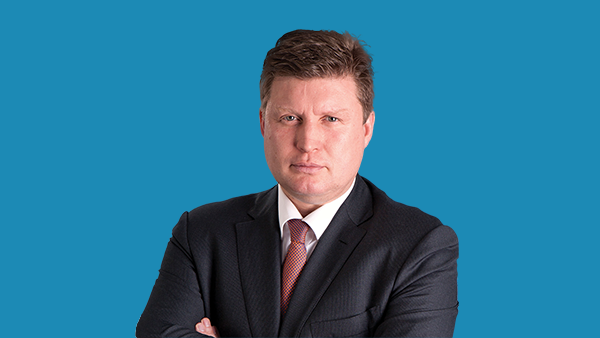This is the fourth part in a series of contributions focused on analyzing Vietnam’s current key transfer pricing regulation Decree 132[1] from the perspective of the 2022 Transfer Pricing Guidelines (“TPG”) of the Organization for Economic Cooperation and Development (“OECD”).
Flexibility or structure?
Between 1995 and 2010, the TPG featured a qualified hierarchy of methods [2]. That is to say, the TPG stated that the traditional methods CUP, Cost Plus and Resale Price were preferred over TNMM and Profit Split. Since 2010, instead the OECD recognized that more flexibility was needed and provides that:
“The selection of a transfer pricing method always aims at finding the most appropriate method for a particular case”[3].
However, the OECD does not mean that taxpayers are entirely free in choosing whatever method leads to the most desired result. The preference for CUP, Cost Plus and Resale Price remains palpable:
“Traditional methods are regarded as the most direct means of establishing whether conditions in the commercial and financial relations between associated enterprises are arm’s length. […] As a result, where, […] a traditional transaction method and a transactional profit method can be applied in an equally reliable manner, the traditional transaction method is preferable…”[4].
But, the OECD falls short of creating an absolute hierarchy:
“There are situations where transactional profit methods are found to be more appropriate than traditional transactional methods”[5].
In Vietnam, we see traces of the same ideas.
“On the basis of information that has been analyzed and availability of data […], the transfer pricing method which is appropriate for the business, the commercial and financial functions and risks […] must be selected”[6].
“The transfer pricing method shall be selected amongst the methods prescribed […] based on the characteristics of the related party transaction and available data”[7].
However, upon closer examination, Decree 132 actually does impose a (qualified, “soft”) hierarchy with CUP at the top[8], then Cost Plus and Resale Price, and if that is not possible to apply, only then the taxpayer may refer to TNMM and Profit Split. This is clear from the provisions “when to apply the method” for each of the methods.
For Cost Plus and Resale Price, Decree 132 states that:
“[The method is to be applied when] taxpayers are unable to compare product based transactions […] or fail to exercise their control over the entire business and production chain […]”[9].
For TNMM, Decree 132 also imposes a qualified priority as follows:
“The method for comparing the net profit margin shall be used in case the taxpayer does not have the necessary information to apply the [CUP] method, or does not have data about the accounting methods of the comparables, or if comparable products or business functions cannot be found, or does not have sufficient basis to apply the Resale Price or the Cost Plus method”[10].
This hierarchy of methods in Vietnam could be referred to as a “soft hierarchy” because there are substantial qualifications to it that make the hierarchical sequence less rigid. In practice, most often, one could consider there is actually no strict hierarchy because of these qualifications.
For example, the taxpayer is allowed to refer to TNMM only when he does not have information available for CUP and no basis to apply Cost Plus or Resale Price. Of course, whether those conditions are met is highly subjective. In a sense, the entire transfer pricing challenge by a tax authority will center around the question which information is comparable in the first place. If a taxpayer wants to use TNMM, he will most often take the view that information for the traditional methods is not or not sufficiently available anyway. To put it another way, the GDT might challenge a taxpayer who has used TNMM instead of CUP, but that will not resolve or decide the dispute. The taxpayer will unavoidably take the view (probably has already taken that view in his documentation) that the information for CUP is not available as it is not sufficiently comparable.
So, to say that the Vietnam’s Decree 132 does have a hierarchy of methods and the OECD does not (anymore) is not entirely fair from a practical perspective. One the one hand, the TPG also continue to include language that, all things being equal, the traditional methods remain preferable[11]. And on the other hand, Decree 132’s purported hierarchy is significantly weakened by wide qualifications (such as not having data) and substantive rules on the situations that fit each method.
The international case law is divided on the subject. In a 2023 Swiss case, the Federal Court decided on a situation involving asset management services, that a 300US$ per hour rate for the service of creating a model portfolio which was available as an internal comparable should be considered as a CUP in that particular case, and that the CUP method has priority over other methods (in this case Cost Plus), citing the TPG at the time[12].
In a 2022 Italian case, the tax authorities claimed an Italian car manufacturer undercharged vehicles when selling them to the USA group entity. The manufacturer had in fact used the CUP method to determine the arm’s length price. The tax authority claimed in this case TNMM was better suited. This surprised the appellate tax body, which pointed out that the same tax authority had in its own regulations expressed that CUP was more reliable than TNMM[13]. The Supreme Court however found that the tax authorities need not prove tax avoidance, just lower than normal prices[14]./
[1] Decree 132/2020/ND-CP Prescribing Tax Administration for Enterprises with Related Part Transactions dated 5 November 2020.
[2] “The “Most Appropriate Method” as the New OECD Transfer Pricing Standard: Has the Hierarchy of Methods Been Completely Eliminated?”, Ahmadov, J., available at https://www.ibfd.org/shop/journal/most-appropriate-method-new-oecd-transfer-pricing-standard-has-hierarchy-methods-been
[3] OECD TPG 2022, 2.2.
[4] OECD TPG 2022, 2.3.
[5] OECD TPG 2022, 2.4.
[6] Decree 132, art. 11 (2) (b)
[7] Decree 132, art. 12
[8] Which is similar to the preference the OECD TPG expresses for CUP if it is “equally reliable”; OECD TPG 2022 2.3.
[9] Decree 132, art. 14 (1) (a) and (b); However, see also the notes Decree 132 provides on the situations that fit with each method.
[10] Decree 132, art. 14 (1) (c)
[11] OECD TPG 2022, 2.3.
[12] Switzerland vs “A AG”, September 2023, Federal Administrative Court, Case No A-4976/2022.
[13] Italian tax authorities Circular No. 32 of 22/09/1980; Although, a slightly later regulation corrected this and stated instead that a case-by-case analysis is needed; Circular No. 42/IIDD/1981
[14] Italy vs Ferrari SpA, September 2022, Supreme Court, Case No 26695/2022 and 26698/2022

